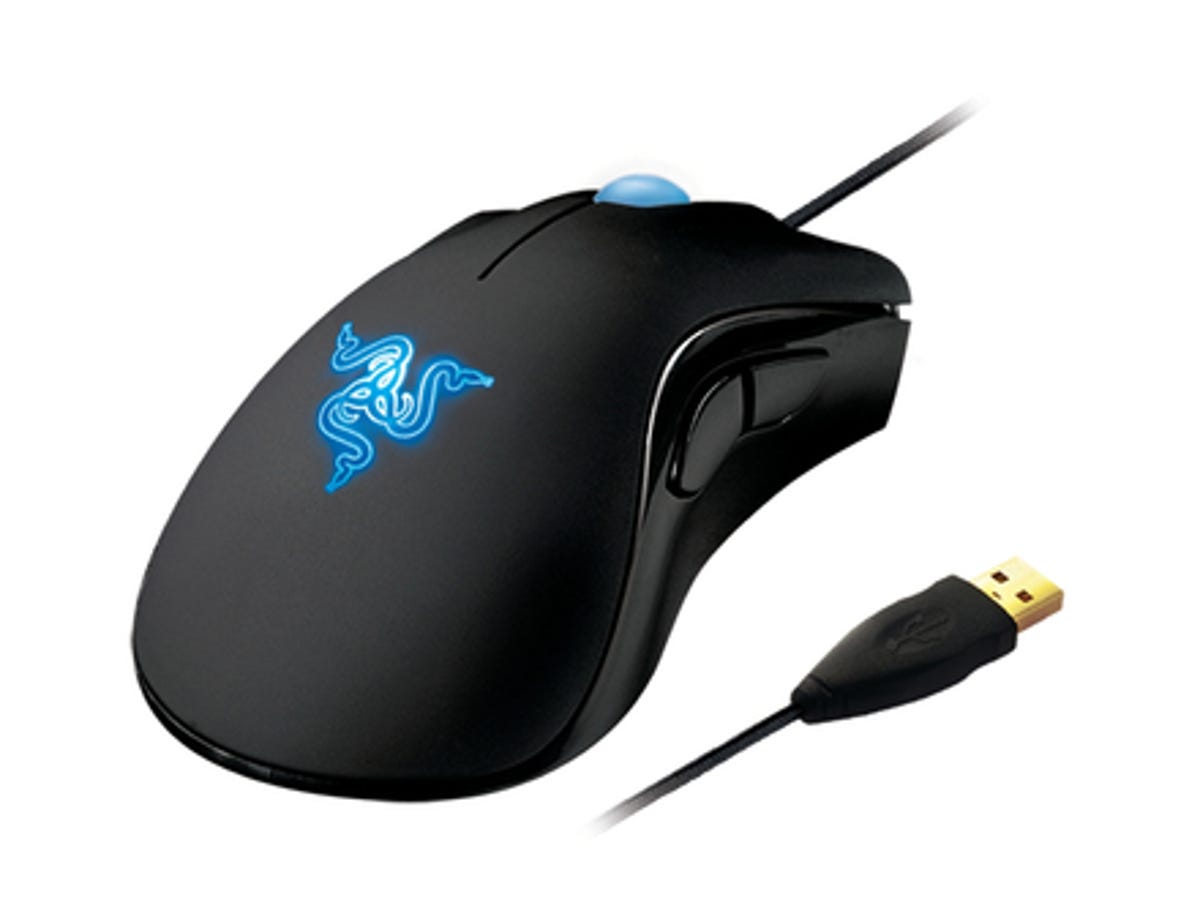 Why You Can Trust CNET
Why You Can Trust CNET Razer DeathAdder Left Hand Edition review: Razer DeathAdder Left Hand Edition
The left-handed version of the DeathAdder mouse may very well help southpaws secure a greater number of those all-important headshots. Comfortable to use, very precise and attractively designed, it also has a reasonable price tag, making for a frag-happy experience all around
Left-handed gamers -- such as this reviewer -- who've become accustomed to using their weaker, less agile hand to control their mouse are put at a disadvantage when it comes to securing those all-important headshots. Gaming stalwart Razer wants to level the playing field, however, with a restyled version of its DeathAdder mouse that caters specifically for southpaws. But does the DeathAdder Left Hand Edition offer enough features to warrant its £45 price tag?
The Good
The Bad
The Bottom Line
Get a grip
This version of the DeathAdder is built to fit comfortably under a gamer's left hand. The left- and right-click buttons are extra large and, along with the main body of the DeathAdder, have a non-slip surface that ensures you won't find the mouse shifting under your grip. The scroll wheel is responsive and sturdy, and emits a suitably ominous blue glow.
On the right-hand side of the mouse's body, you'll find two programmable buttons, designed to rest just under the thumb for speedy access. Using them feels natural if you tend to rest your palm on your mouse, but they're slightly harder to access in a hurry if you tend to hold your mouse in a 'claw' position.
On the underside, you'll find a button that cycles through the DeathAdder's five programmable profiles, as well as the 3,500dpi (dots per inch) Razer Precision 3.5G infrared sensor. If you enjoy gaming with the mouse sensitivity turned up high, the DeathAdder will cater to your needs.

The DeathAdder is wired, connecting to your computer via a seven-foot-long, braided fibre cable and a gold-plated USB plug. Pleasingly, the cable is light enough and built high enough into the mouse's body so that we experienced very little drag during testing -- something helped by the Teflon feet on the DeathAdder's underside, which allow for a smooth, gliding motion.
Success at the polls
The DeathAdder proved extremely comfortable during gameplay, and using it to aim felt very natural. We were particularly impressed with the maximum polling rate of 1,000Hz. The polling rate determines how many times per second the mouse reports its position to the computer. A standard mouse reports its co-ordinates about 125 times per second, so its polling rate is about 125Hz. The more frequently the mouse reports its position, the smoother mouse movements will feel. Turning up the DeathAdder's polling rate to 1,000Hz made for an extremely smooth experience that hardcore gamers will certainly appreciate.
We were slightly less impressed with the on-the-fly dpi switching. By changing the dpi setting of a mouse, it's possible to adjust how sensitive the mouse is to movements. This comes in extremely handy while gaming. For example, if you generally want to move around and turn quickly in a game, you can use a high dpi setting, rapidly turning it down if you prefer more precise movement once zoomed in on a target.
Unfortunately, we found that switching the DeathAdder's dpi setting made the cursor hang for about half a second. That's not a major gripe by any means but, if you tend to rely heavily on dpi switching, you may find that the stutter proves the difference between a successful frag and getting fragged yourself.
Bereft of buttons
Every button is comfortable and easy enough to access. The scroll wheel only clicks down, with none of the left-or-right-leaning capability that you might find in other gaming mice. Also, with only five buttons in total, you might struggle if you want dpi-switching capability and a couple of macros assigned to your mouse at the same time.
If you like a wealth of customisable keys, other gaming mice will cater to your needs better than the DeathAdder. But, if you care more about the actual feel and performance of the mouse, then the relative lack of keys shouldn't bother you too much.
Left behind
As a leftie accustomed to controlling gaming mice with our right hand, using the DeathAdder felt unusual at first. But it quickly began to feel more natural.
Bear in mind that, if you're like us, you'll have to switch to handling keyboard presses with your right hand if you opt for the DeathAdder. Making this adjustment is considerably tougher than learning to use the mouse with your left hand, and it will take plenty of getting used to. You'll also have to reconfigure all the default key inputs every time you get a new game. Left-handed gamers will have to make a judgement call as to whether the extra control they'll get when using the mouse with their dominant hand is worth all that hassle.
The DeathAdder doesn't come bundled with any software, but you can download some from the Razer support site. The driver software lets you customise button assignments and tinker with the mouse's sensitivity. Pleasingly, everything is presented in just one panel, making customisation a doddle.
It's also worth mentioning that the DeathAdder is Mac-compatible -- something to bear in mind once Valve's Steam platform comes to Macs.
Conclusion
The Razer DeathAdder Left Hand Edition is an extremely comfortable mouse that provides a smooth and precise gaming experience at a reasonable cost. If you're already accustomed to using a mouse with your left hand, we would recommend buying the DeathAdder. But, if you've already trained your right hand to handle a mouse, then it's unlikely that a left-handed mouse, no matter how comfortable or precise it is, will convince you to switch. In that case, it might be worth giving the original, right-handed DeathAdder a go.
Edited by Charles Kloet


